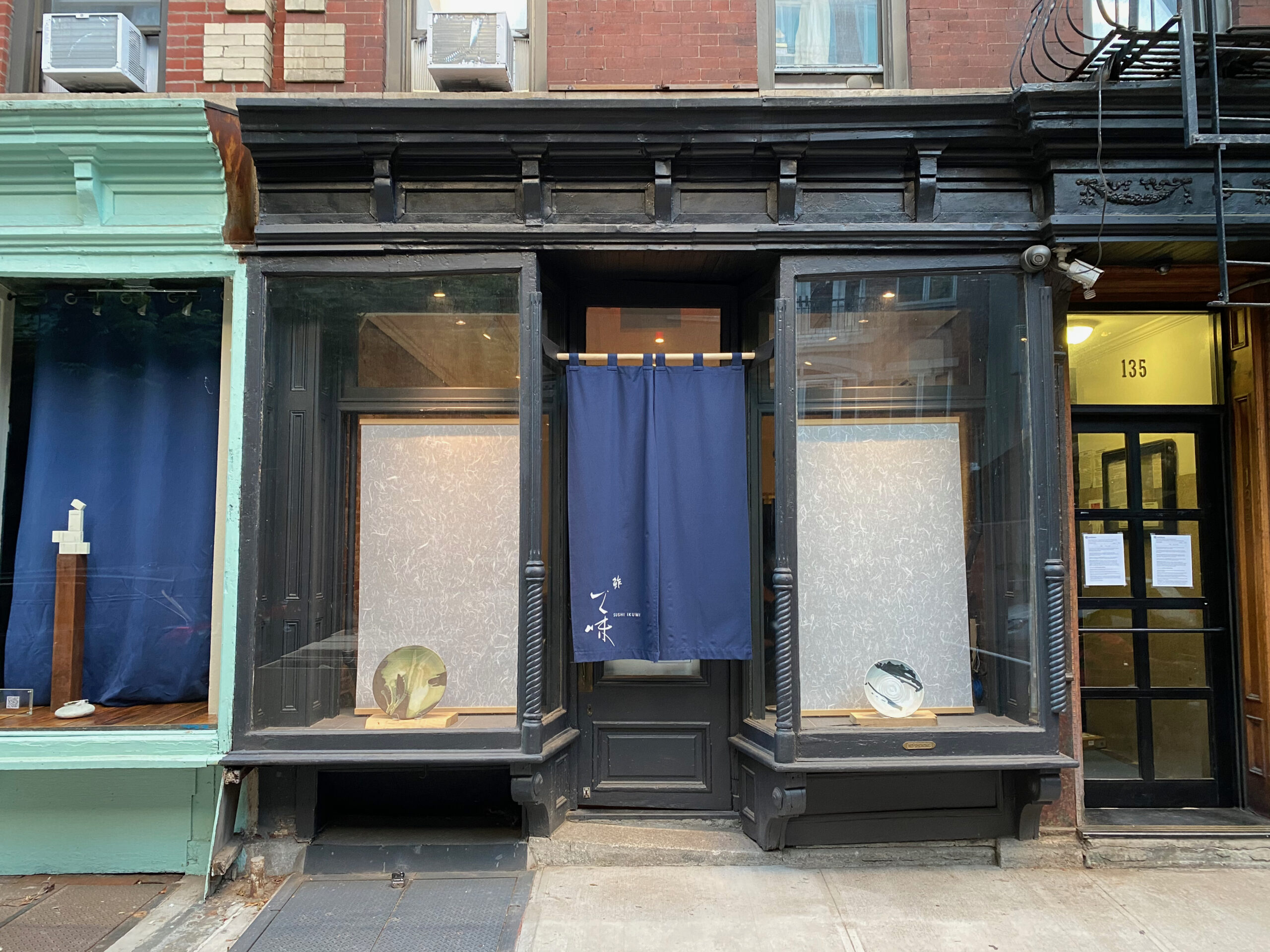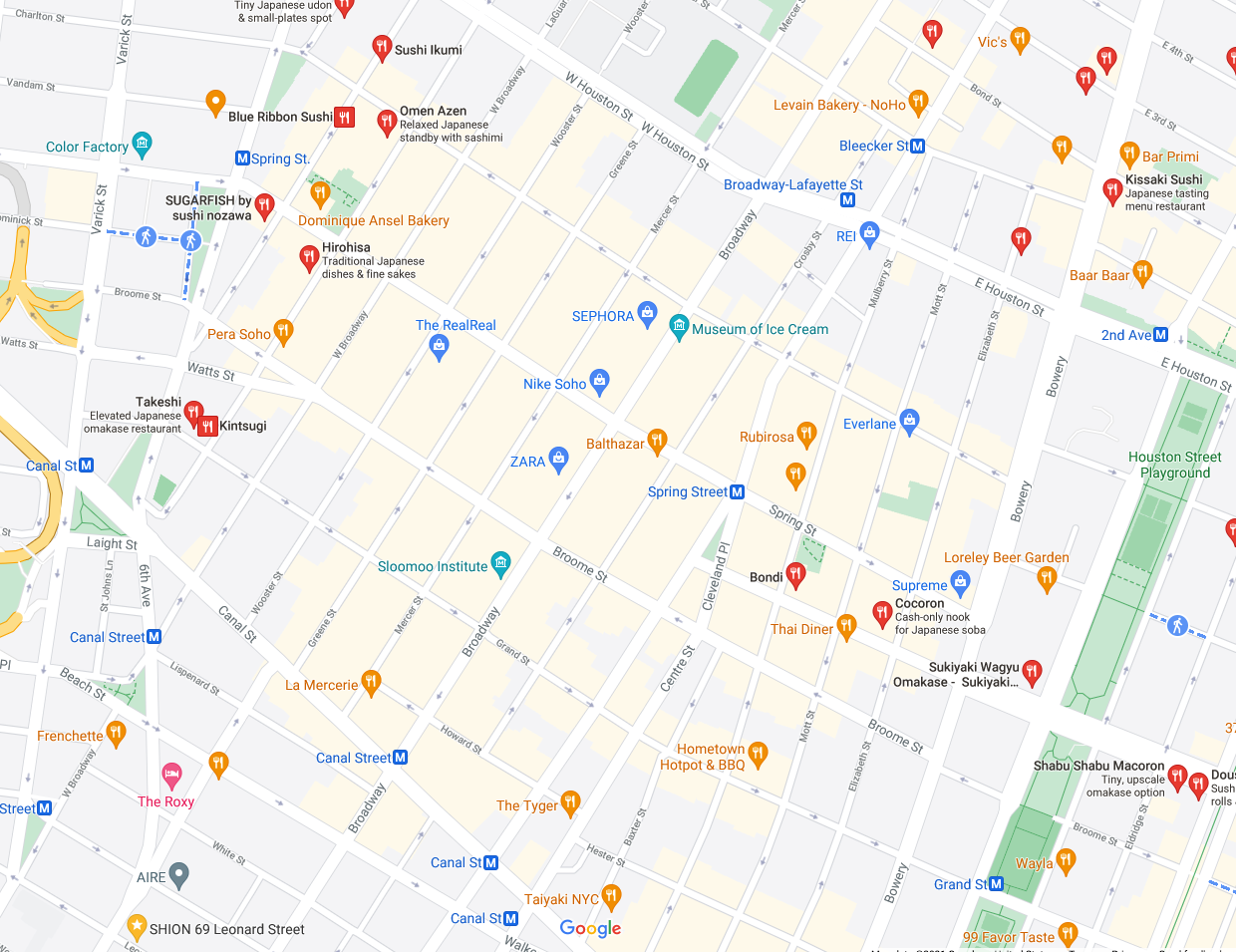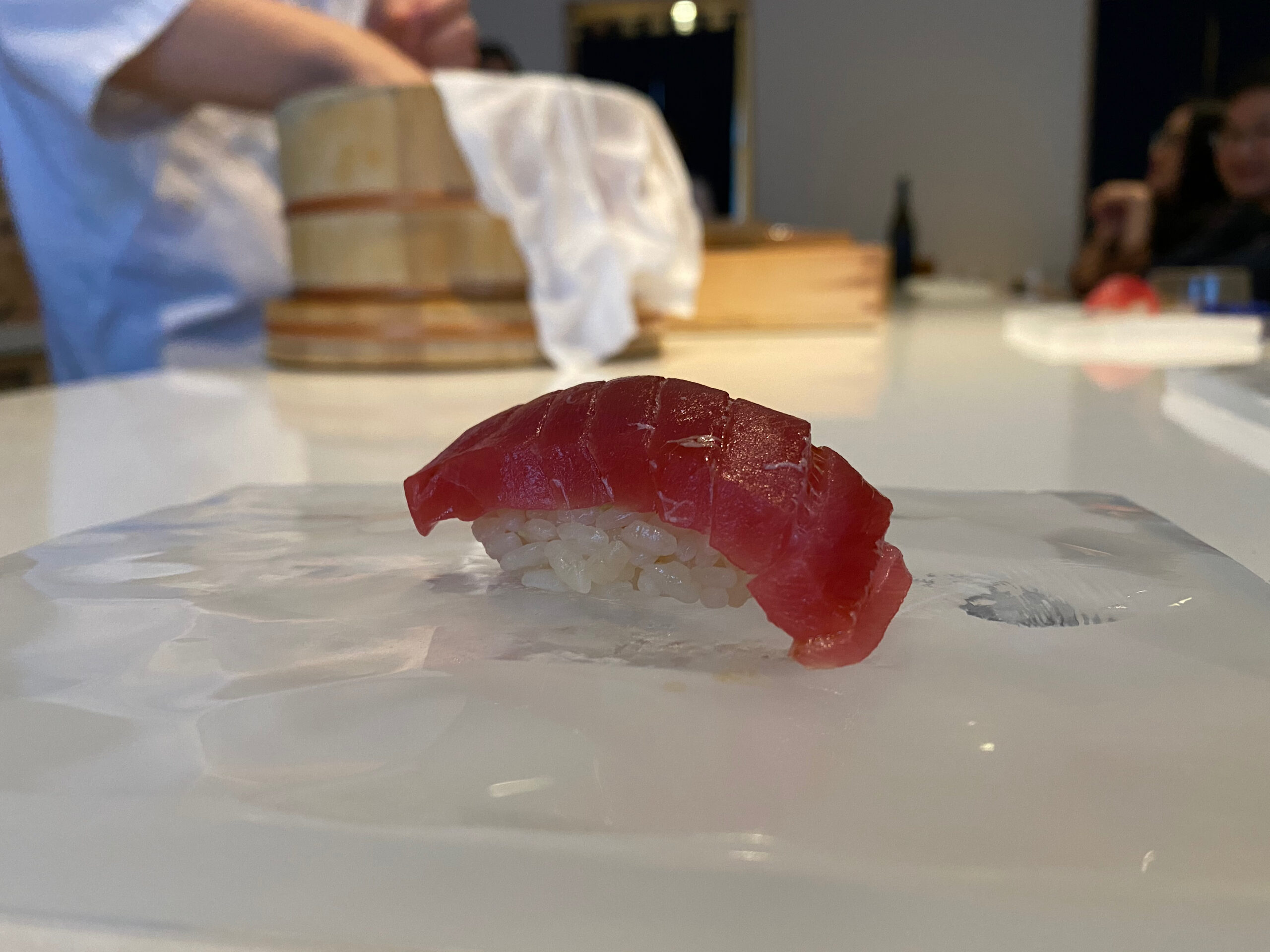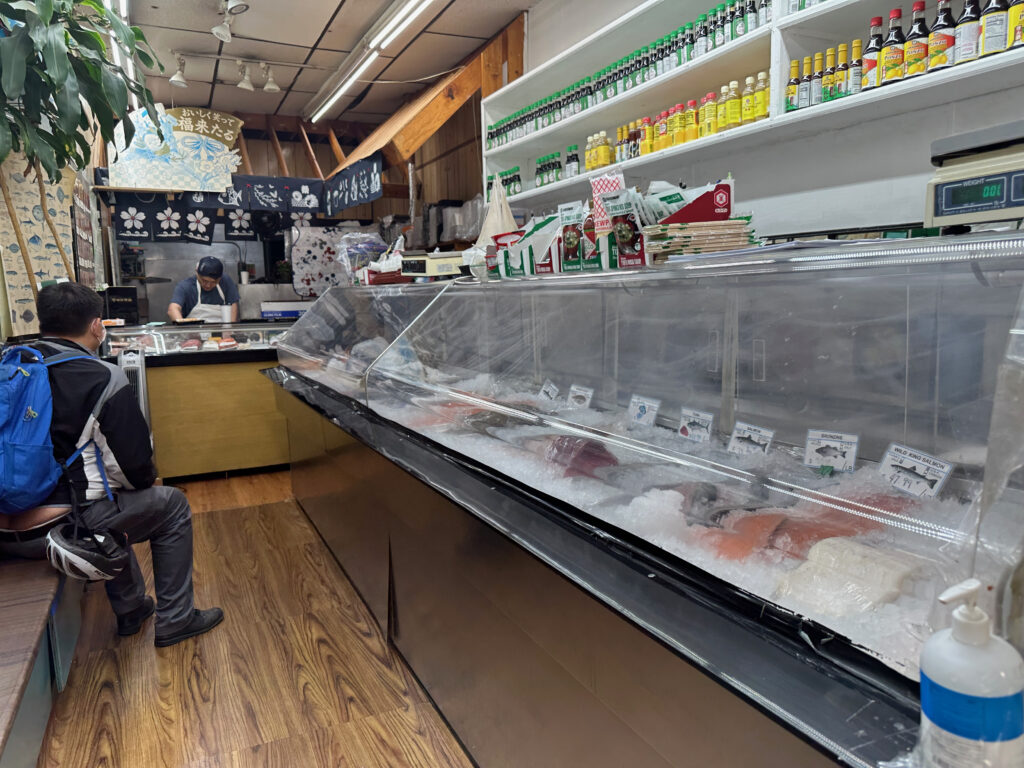Sushi Ikumi is unique. If you plot out all the sushi restaurants in Manhattan, you’d be surprised to know that SoHo – the ritzy, glamorous, maybe pretentions, maybe not – lower manhattan neighborhood famous for post-underground retail stores and that one restaurant you keep seeing on your favourite influencer’s Instagram – does not have a ton of sushiya.
Why is that?
Rents are expensive. Spaces are big. People go there to shop.

Inside

Outside Ikumi
There are a few exceptions to the rule, of course. Blue Ribbon Sushi is both decent and the location of Mrs Sushi Legend and my first NYC date. Takeshi/Kintsugi has gotten buzz, as has Sugarfish, though you’ll need to waterboard me first before I agree that rice should be that warm.
Don’t believe me? Here’s a very scientific method: I searched google maps. Notice the big gap in the middle? That’s central SoHo. Empty as a desert.

Notice the gap in the middle – heart of SoHo
Sushi Ikumi – the subject of this review – isn’t central SoHo, but it’s close.
You can spot it in the top left of the map, just south of Houston St. (for out of towners – South of Houston = SoHo).
It’s the sister restaurant of Hirohisa, a well-known and revered NYC Japanese restaurant down the block. The chef, Jongin Jeong, is ex of Hirohisa, but the meticulousness remains; a staff member laid course 3 down for 5 customers with the daikon radish on the left. Nope. Jeong went to each and flipped it around, then pulled the offending party aside for a brief team talk. It’s the little things after all.

Focus
A truly involved Itamae
Jeong also approaches each party and explains in detail what they’re eating and where it’s from. If you read the blog, you’ll know that I’m not married to that approach. Sure, chefs should know if asked, but each course doesn’t necessarily require an open mic.
That said, given the location and the price point – a very reasonable $160 for 17 courses – I expect a more inexperienced customer base, so the descriptive approach is probably best for everyone.

Wide shot of counter
Just an FYI…
Before I get into the Omakase, a word to the wise. Eater – that small food blog – mentions that Ikumi serves Kyoto-style sushi (aka Kyozushi). As background, since Kyoto is far from the water, locals focused heavily on cured fish, specifically mackerel, and wrapping sushi in kombu, not Nori.
However, with the exception of course 15 – Bozushi, which by the way is fantastic – I didn’t see it. Not a big deal, but it may disappoint some people who get their hopes up.

1: Kegani (hairy crab), Ikura and Japanese Watercress

2: Isaki from Kagoshima, Shima Aji from Nagasaki, Kelp from Hokkaido
Can you tell it’s Isaki (chicken grunt) season? June’s the best month, so if you enjoy the milky white and sunburst red colour and fattier taste, it’s a small window. I’ve had it at a few places – Kosaka always a good bet in the summer – but it’s still a fairly rare Neta on New York City sushiya menus. Serving it as sashimi in course 2 is the Itamae equivalent of setting the stage.

Another view of the Isaki


4: Kinmedai

5: Kohada

6: Aori-ika
It’s also Aori-ika (bigfin reef squid) season. Not to over-emphasize this beauty, but as the fantastic book “Sushi” by Kazuo Nagaayama, Hiroshi Yoda and Kazuhiko Tajima puts it, Aori-ika is “ranked highest of all squid species”. Ok then. If you think that squid is chewy and therefore difficult to eat, try Aori-Ika, prepped properly. Sliced delicately, left for a day or two to soften, served malleably as nigiri. Delicious.
Remember that Isaki I mentioned earlier? It returns as part of Course 7. The best thing is that despite being a shiromi (white-fleshed fish), it still has a layer of fat that makes it decadent, particularly when it matures.

7: Isaki

8: Shima Aji

9: Aji

10: Kuruma Ebi

11: Kamasu with Japanese Cucumber

12: Akami (Bluefin from Spain)

13: Chu Toro

14: Iwashi

15: Bozushi

16: Uni

17: Anago

18: Toro Taku Temaki

I’d be remiss if I didn’t touch on the Miso Soup, because I’m rarely served it during an Omakase. And too bad. I love the stuff, especially when it’s done with a heartier broth like it was at Ikumi. Like the rest of the country, NYC was recently suffering through a heat wave that approximated the surface of the sun. And yet, the soup was a great palate cleanser. A nice touch from a small team that was full of them.
Recommended.




